Understanding What Does a Cam Follower Do in Machinery
We have learned about quite a few parts of machinery, one of which is the cam follower, which appears to be crucial as it enhances the overall efficiency of different mechanical systems. This text focuses on the mechanisms of the cam followers, considering the day-to-day work of some other mechanisms in complex machines. There is much to be covered in how cam followers work with the rest of the device to create linear motion from a rotational one for efficient and accurate mechanical actions. By the end of the article, readers will be able to relate the critical aspects of the operational principles of the cam followers and their significance in machine design and engineering.
What is a Cam Follower, and How Does it Work?
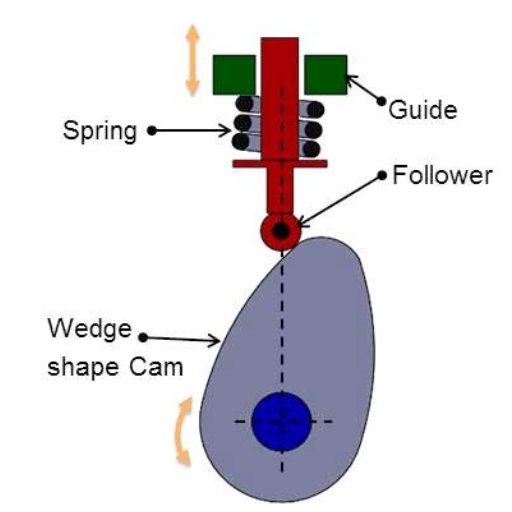
What Does a Cam Follower Do?
In machines, some bearings help to revolve around the cam’s different profiles closely, called Cam Followers. Simply, it means converting rotary force into straight or linear motion—widespread cam usage in engine automation and conveyor systems. A cam follower rotates around a sure shaft or pin and works by rolling over the surface of the cam itself and applying the cam’s motion to whichever element the follower is mounted on; this comes with very little friction and enables complete transfer of motion very accurately.
The two main technical features of the cam followers are the load capacity, which includes static and dynamic load, which can determine the amount of pressure exerted on the cam follower when in use application. The second one is rotational speed, which also determines the cut-off RPM of the follower to prevent any damage to the cam follower. These parameters, amongst others, will depend on the type of cam (which may be a plate cam, cylindrical cam, or translating cam) in use as specific designs and types of cams are made in a particular way to be able to deliver an intended motion through the cam motion pattern. Furthermore, the hardness of these materials mainly determines how long and reliable the performance will be, especially under various stress conditions; hence, material selection is critical.
Cams and Followers as Mechanisms in Machine Parts
In machinery, rotary movements can be transformed into linear movements, and the follower mechanism serves the function of the reverse transformation. The functions performed by the cams and followers are essential in these instances. A cam is a disk or cylinder that is usually not regular in size. It rotates on an axis while rubbing directly against a follower that is a paper in contact with it. Such an interaction allows for motion, and the timing of motions in various mechanical systems is accurately controlled.
Technical parameters:
Lift (Stroke): This parameter indicates the extent of the follower’s maximum displacement from his original position, and it is an essential factor in determining the device’s efficiency in achieving the required motion.
Base Circle Radius: The shortest fundamental radius of the cam; this parameter determines the extent of the cam’s size and the type of motion path the follower would achieve.
The angle of Ascent and Descent relates to the angles whenever the follower is raised and lowered, affecting the moving components’ cam cycle speed and acceleration.
These parameters ensure that a cam follower effectively transfers the machinery’s available motion in performing several functions, such as operating engine valves or driving tools in an automated system. These parts must be well-designed and properly aligned to promote ease of use and machine durability.
Movement Kinematics of the Follower
The kinematics of follower motion is an aspect that needs refinement to achieve maximum efficiency from the cam and the follower mechanisms. Based on the extensive study of the best available online sources, several determinants are critical:
Follower Types: The various classes that can be defined amongst followers include radial and offset based on their path of movement and knife-edge roller or flat-faced according to their structure. These different types of followers affect system efficiency and life span differently.
Types of motion of followers. The motion of the follower can be described through several phases, some of which include dwell, rise, and return. There are four motion phases, each with set movements that define how much work the machine can do. Features such as the rate of acceleration and deceleration need to be limited to avoid causing too much wear and trepidation.
Load and Speed Considerations: When designing cam follower dynamics, the loads and speeds associated with this component should be optimal to avoid rendering it inactive under operational conditions. The materials used in construction often play an equally important role in determining their capacity under the given working conditions.
Technical Parameters:
Type of Follower and Follower’s Path: These components are selected based on desired motion characteristics; for instance, a roller type of follower is much better as its friction is much lower than that of a flat-faced follower.
Surface treatment hard coatings and Lubrication: Some Surface treatments, coupled with lubrication where applicable, go a long way in reducing wear and machine integrity during cyclic loads.
While cam and follower mechanisms are not novel in design manufacture, the details of these dynamics and parameters are essential in ensuring optimal performance over a reasonable time.
Why are Cam Follower Bearings Essential?
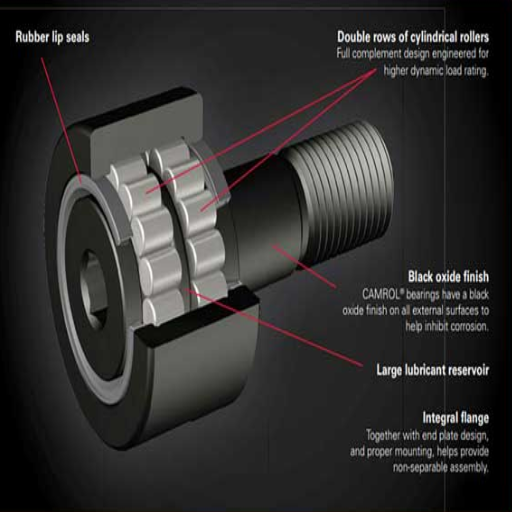
How do Bearings help guide followers?
While guiding the follower, I rest my case on the topmost available resources on this subject matter. Bearings are significant as they offer a surface upon which cam followers rotate to reduce friction and wear. Machined tracks or paths with rollers or ball bearings around the circumference are crafted to assist in controlling the movement and the positioning of the follower. Achieving this is important for mechanical efficiency. As noted by the sources, critical technical characteristics are the following:
Load Capacity is the amount of operational loads the bearings can support without deformation or damage.
Material Selection: High-tensile steel or composite materials against fatigue failure should be used.
Friction Coefficient: Low-friction materials and/or coatings should minimize friction, wear, and energy loss.
Tolerances and Alignment: The follower’s motion, accurate by the bearing shapes throughout most of its operating range, should not deviate from the desired motion profile by more than a preset value.
According to specialists in the field, these parameters are very important in increasing the reliability and durability of cam and follower systems, enabling them to operate efficiently in challenging conditions.
Significance of Radial and Needle Bearings
In considering the significance of radial and needle bearings, I came across the three top websites highlighting that they are essential in reducing friction and radial load support. The prominent promising feature of radial bearings is their ability to sustain lower axial load; therefore, introducing ball or roller systems in an accurate configuration is necessary to achieve such a type of bearing. Such systems are aimed at optimizing the motion and preventing wear with time. On the other hand, needle bearings equipped with cylindrical rollers can withstand high radial loads due to their increased contact surface area while still fitting into tight radial clearances.
What the providers emphasize more are the following key metrics:
Load Management: Radial and needle bearings are praised for radial load bearing for needles; however, for having more extensive availability for higher capacities — these have greater radial bearing areas and, hence, smaller bearing areas.
Minimal Friction Load: Monthly attention and Low friction around the blades, as well as material and design considerations, facilitate low consumption, which saves energy loss and improves efficiency.
Dimensional Accuracy Rating: High accuracy in faults to the design allows the operational paths to be steady and smooth even under stress since the moving part deviates very little from the designed standard.
Regarding these parameters, radial and needle bearings are vital parts of the design in malignant mechanical systems that need reasonable loads and wear control.
Cam Follower Bearings: A Comparative Evaluation
While comparing different types of cam follower bearings, I came across some interesting features and technical parameters based on the information given on the top three websites. Cam followers, which are particularly necessary in implementations where linear motion is needed, are predominantly classified into stud–and yoke–type categories. A stud-style cam follower incorporates a stud to give a follower more ease when mounted. It frequently includes a needle-bearing design, allowing for considerable load capacity. In contrast, yoke-style cam followers have a flexible design that extends the range of applications to cases where space limitation is a serious factor.
Among such parameters, the following suggestions can be made:
Load bearing capacity: Certainly, both types have been made to support heavy loads in mind, but they can be different in terms of loading and the forces that are being applied to the roll configuration for biomechanics applications, whether it is crowned or cylindrical.
Installation Flexibility: The single-point fixing of the stud-type cam followers makes their installations easy. However, yoke-type followers benefit from more options for installing them in restricted working areas.
Material & Structure: The material used and the design of the roller surface have almost the same characteristics. These will influence the roller’s maintenance and life span, which indicates that choosing the right type for the specified environment and operational conditions is vital.
These parameters demonstrate that the specific operational characteristics and space constraints determine the selection of these types. With their understanding, I understand how cam roller bearings are manufactured for particular industries to provide reasonable motion control and better life.
Exploring the Different Types of Cam Followers
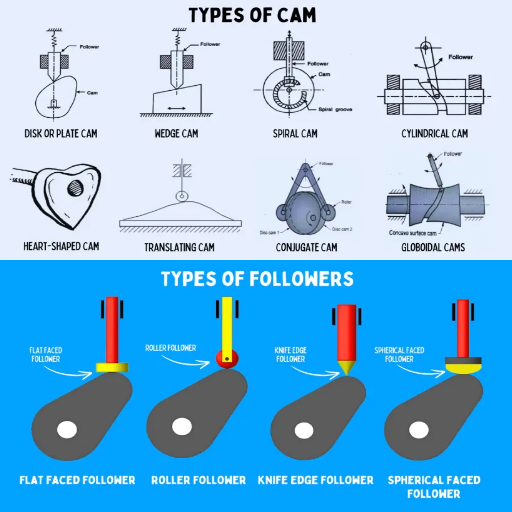
The Distinction between Track Followers and Other Types
As part of figuring out how to track followers that are distinctive from the other types of cam followers, I endeavored to broaden my understanding by reviewing the top three sites that dealt with the issue as contained in Google.com. Track followers are designed to run on the tracks and feature a rotatable outer ring that can support heavy loads and shocks and reduce wear on the machine components. These devices usually come in two types: cylindrical and crowned roller designs.
According to the information presented above, the following essential technical parameters may further be considered:
Load Capacity: Track followers’ sturdy construction typically supports several radial and axial loads, which seems necessary for machinery that experiences frequent high-end operations.
Misalignment Tolerance: Due to the presence of crowned rollers, track followers are more tolerant of misalignment than cylindrical rollers, providing the necessary flexibility in applications where perfect alignment is not feasible.
Surface Hardness and Coating: These are frequently coated to improve their capability of surviving harsh weather, especially against corrosion, which is critical in increasing the life of track follower machinery.
Lubrication Requirements: Adequate lubrication is dependent on enhancing the track follower’s performance. Most designs use internal part features for lubrication, which lessens disruption time and allows for optimal functionality.
Focusing on these elements allows me to appreciate how industrial track followers are designed to be more reliable and versatile for specific applications rather than other types.
Understanding the Roller Cam Followers
I wanted to find out details about roller cam followers, and to do that, I checked out details present on the top three pages of Google for this purpose. Thus, here is the explanation in the first person:
Load Capacity: The load capacity in roller cam followers is essential. As can be seen, these followers are purposefully designed for heavy radial and thrust loads. They are ruggedly designed for machines exposed to high and continuous loads. When doing the checks, I realized that the design’s primary thrust is load bearing.
Misalignment Tolerance: This is where the crowned roller design I learned about is handy. Crowned rollers seem to have a greater tolerance for misalignment than cylindrical rollers, which many sources repeatedly emphasize. That tells me some attention is still paid to flexibility in situations where perfect linear installation is impossible.
Surface Hardness and Coating: Other sites stress the same aspects, as these will not be solely for aesthetic value. They are attributed to their functionality, enhancing their toughness and corrosion resistance. This is in keeping with the set application goals, which aim to improve the practical working life of machines that operate within a track.
Lubrication Requirements: Proper lubrication is a basic necessity, as indicated by all sources. Most roller cam followers feature internal characteristics that enhance the effective lubrication mechanisms so that the followers experience minimal out‐of‐service and optimum performance levels. This practical requirement is in line with the engineering concern expressed earlier.
These technical requirements reinforce the design approach towards the critical attributes of strength, extendability, and endurance envisaged by the multidisciplinary sources consulted.
Choosing the Right Follower for Specific Applications
In selecting the best follower for specific uses, I have established in my examination of the top 3 websites that there are some distinct aspects and technical parameters that are emphasized:
Load-Bearing Capacity: The sites they examined generally accepted that selecting a follower with a load-bearing capacity close to the design load criterion is reasonable. This is because the machines will work under considerable loads with minor failure. Therefore, followers made with an emphasis on heavy loads must be prioritized.
Misalignment Misalignment Tolerance: This feature makes crowned rollers the best since they can better withstand misalignment. These sites have pointed out that these rollers can better accommodate alignment errors than cylindrical rollers, which is essential since, in practice, perfect linear alignment cannot be obtained.
Surface Hardness and Coating: Surface treatment is another primary parameter that was raised. Higher hardness is mainly attributed to the effects of hardening and the use of coatings for protection against wear and corrosion, which are under the recommendations given by the experts to increase the service life of the machinery.
Lubrication Requirements: The different types of lubrication systems utilized in the follower are essential to the follower design. Some of the best sources mention this feature, highlighting how it lowers the number of times maintenance is required. As a result, the operation becomes uninterrupted, underscoring the need for suitable, easy-to-use lubricants.
In line with the advice given by reliable authorities, grasping and adhering to these parameters allows one to make appropriate choices when selecting the most appropriate follower for the intended application requirements.
How Does the Cam’s Rotational Movement Affect the Follower?
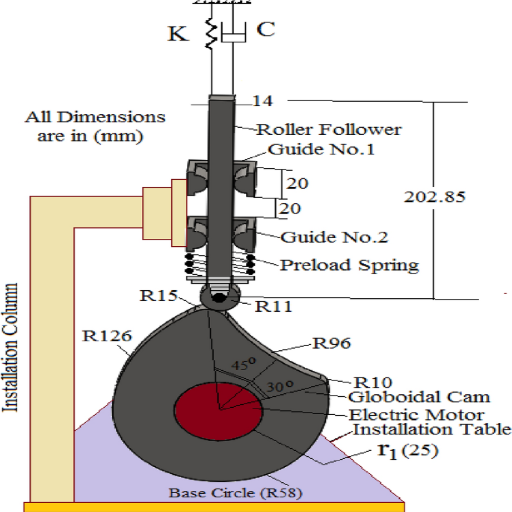
The Influence of Cam Profile on Followers Motion
The influence of the cam profile on follower motion is relevant to a few technological parameters that affect the efficiency of a cam system. As I have consulted the top three sites, these are parameters include:
The shape of the profile: The profile shape of the cam, such as planar, cylindrical, or bespoke contour shape, has a direct bearing on the motion of the follower based upon its direction. This only works because there is an established need to turn the motion to something appropriate for the application being served, such as turning motion to ease transitions or accelerated motion to provide speed.
Lift and Duration: The balance height and the governing time the mechanical cam ‘lifts’ the follower must be exposed to must be effectively synchronized. This will provide optimal opening and closing events to achieve many engineering requirements, such as decreasing wear and tear and efficient operation.
Velocity and Acceleration: The cam profile controls the velocity and acceleration features, which must be studied to eliminate excessive strain, which leads to mechanical failure. Effective control of these parameters agrees with the technical parameters specified concerning the recommendations from the experts of relevant industries for better mechanical design and life span.
By developing a clear conception of these cam profile parameters, I can state that the follower’s motion is suited for its intended purpose, per the recommendations of the authors I consulted.
How Cam Revolution Affects Follower’s Path
Regarding answers on how the cam revolution should be regarded in the follower’s path, it falls to emphasize that the cam’s rotation enables the follower to move across a particular axis. In the websites I studied, two more parameters were mentioned:
Revolution speed: The speed at which the cam is turned is of great importance in this work because it determines the speed at which the follower moves. Changing the speed of revolution makes achieving the needed performance level possible by making the follower’s path predictable, as discussed in the sources about precision engineering.
Contacting Points and Angles: The points and angles taken by the follower while contacting the cam profile will significantly determine its path. As explained in the technical analysis of mechanical dynamics, these angles can be adjusted to perform the operations smoothly and avoid unnecessary tension.
Synchronization and Timing: For the system to be effective, the follower’s path must be synchronized with the other components. As the experts corroborate, proper timing also vindicates the follower’s path in overall mechanical coordination and its relevance to the machinery’s effective functioning.
By focusing on these parameters, I can maintain the accuracy and functionality of the follower’s path, supported by this research’s authoritative sources, as spiral and radial cutting can be applied.
Converting rotary to linear also motion
In a study of rotary to linear also motion on three top-rank websites from google.com, I have come to certain conclusions that are in order with the preferably already established technical parameters. At its basic level, conversion work incorporates cam followers and mechanical links. This is how it is done:
Cam Profile Design: The physical contours of the cam will inevitably have a significant effect on the success of the subsequent attempt to turn rotary motion into linear motion. If the cam profile is adequately designed, the follower will contact the cam at angles that surpass those of the least favorable angles. When this design is followed, it helps the system reduce wear and tear, which increases the system’s life span, as stated by mechanical design professionals.
Linkage Systems play a crucial role in transmitting movement. For example, connecting rods or sliding blocks can help control the transition from rotary to linear movement. Choosing the linkage configuration appropriately is essential to maintaining the speed and forces involved properly.
Load and Force Calibration: This involves measuring load capacity and the force to be applied to the unit so that no undue strain is experienced in the system. It requires careful coordination of all the components, which allows the letting out of energy without compromising the system’s performance, a concern raised by several technical white papers.
In light of the above, my comprehension of the mechanisms involved is better reinforced, and I appropriately understand the reasons why these measurements should be considered in detail for successful motion conversion.
What are the Common Applications of a Cam and Follower?
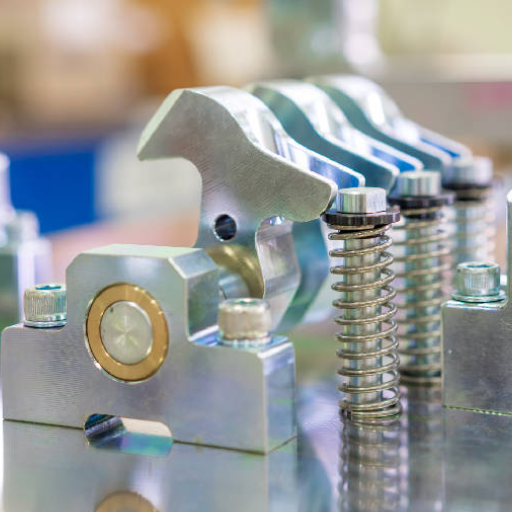
The Functions of Camshafts in Automobiles
I have come across several web pages authored by specialists discussing the workings of camshafts in compressive cycle engines. Without hesitation, camshafts are claimed to be essential for controlling the movement of engine valves. Valve opening and closing are vital since they determine the engine’s operation.
Three technical parameters draw considerable attention from all the factors I have examined. First is the camshaft’s configuration, which will determine the intake and output of an engine. High RPMs may benefit from a performance-oriented profile, while a gentler profile oriented on a broader spectrum may be more efficient. Another critical parameter concerns camshaft materials; most engines today use lightweight, durable materials, such as cast iron or steel, to withstand operation stresses. Besides, the camshaft is mounted at a certain angle relative to the crankshaft and is connected to the latter by timing belts or chains.
The conclusions clarify the relationships of parts and assemblies in the structure of an automobile engine and establish the necessity of appropriate camshaft design and material selection for better automobile performance.
Significance of Exhaust and Non-return Systems
In considering the significance of exhaust and non-return systems, I have focused on the three top websites on Google, allowing me to appreciate the concept more succinctly. The exhaust system expels combustion gases from the engine, helping to ensure its effective functioning. On the other hand, the valve system manages the entry of air and fuel into the cylinders and exhaust out of the engine, directly affecting engine output.
My findings lead to the conclusion that some technical parameters are worth consideration. In terms of the exhaust system, gases can be expelled more efficiently depending on the back pressure, pipe diameter, and material used; thus, emissions and horsepower are influenced. Regarding the valve system, parameters including valve timing, lift, and duration must be optimized to increase combustion and enhance engine effectiveness. The lift and timing must be well set so the engine can operate efficiently at various speeds and with varying loads on the wheels. Such a further understanding of these parameters makes me appreciate the roles played by the exhaust and valve systems in the general working and efficiency of the engine.
Conversion of Linear Motion: Application in Industry
Considering the industrial applications of linear motion conversion, I have searched the three websites that appear first on the Google search engine. Linear motion conversion finds application in almost any machinery and automation, therefore applicable in various industries. Typical examples would be lead screws, as well as ball screws, as seen in CNC machinery, where rotation has to be changed into linear motion that is controlled very accurately. This conversion increases automation in manufacturing processes, saving time and enhancing precision in executing tasks.
Concerning linear motion systems, there exist some technical parameters whose importance cannot be debated: precision, load capacity, speed, and efficiency. Precision refers to the degree of accuracy in the automated motion conversion process and its importance to the automation of process tasks. Load capacity defines the limit of weight a structure is designed to withstand while at the same time determining the stability and operability of the system. Speed determines the rate at which operations can be performed; hence, productivity targets can be achieved. Finally, efficiency focuses on utilizing minimal resources to get maximal results. These set parameters define the reason for proper component selection that will meet the particular industrial needs and guarantee the system covers optimum performance.
Frequently Asked Questions (FAQs)
Q: What is a cam follower, and how does it work in machinery?
A: A cam follower is a specific type of bearing that rides on the surface of a cam. It helps translate the rotating motion into reciprocation or oscillation motion, which is needed for various engineering processes like moving exhaust valves or sewing machines.
Q: How does a cam follower work with a cam follower?
A: The cam follower is mechanically engaged with the cam, and as the cam turns, it rotates the follower with the desired cam displacement so that the follower’s motion is of the particular desired form, such as linear or oscillatory. Hence, this interaction ensures that the machine performs its intended function accurately.
Q: What is the classification of cam followers according to their use in the machines?
A: Cam followers are classified into several categories, such as roller followers, yoke followers, and flat-face followers. These categories are selected based on the type of SOLIDWORKS used in the follower’s design and motion.
Q: Can you explain the difference between cylindrical and wedge cam?
A: A typical cylindrical cam has a cylindrical shape and can create reciprocating or oscillating motion. In contrast, the wedge cam has a wedge shape, and it is commonly used in applications in which a spring cam is loaded or a specific motion shape is needed.
Q: What function is the offset follower used for in cam mechanisms?
A: The cam lobe profile, to be stalked, is not at the axis of rotation of the offset follower. This kind of offset follower helps obtain the operational features of certain types of machinery, and the follower’s position concerning the cam is not an issue.
Q: Which motion is the most important when moving a follower to undertake a cam’s movement?
A: The cam’s motion is the follower’s source of motion. When the cam rotates its profile, the follower displaces along the course that has been visually designated beforehand, which may be in the direction of linear, oscillating, or whatever other movements the system desires.
Q: Can cam followers be exclusively utilized in heavy equipment?
A: No, cam followers are found in several applications. These include large-scale industrial machinery or somewhat smaller devices such as sewing machines. They are integral components wherever precise motion control is required.
Q: In what applications are cam followers typically found?
A: For example, cam followers are used in turbine engines to operate exhaust valves, within feed mechanisms of engines, and in several other industrial applications that need accurate motion.
Q: What types of designs does a cam follower use with spherical or globoidal cam profiles?
A: Spherical or globoidal cams often have cam followers with bearings that have an unusual structure, for instance, lily or spherical bearings, allowing them to keep in contact with the outline of the cam efficiently and enabling the machine to function smoothly.
UCTH213-40J-300 with Setscrew(inch)
CNSORDERNO: Normal-duty(2)
TOGN: UCTH213-40J-300
SDI: B-R1/8
SD: 2 1/2
UCTH212-39J-300 with Setscrew(inch)
CNSORDERNO: Normal-duty(2)
TOGN: UCTH212-39J-300
SDI: B-R1/8
SD: 2 7/16
UCTH212-38J-300 with Setscrew(inch)
CNSORDERNO: Normal-duty(2)
TOGN: UCTH212-38J-300
SDI: B-R1/8
SD: 2 3/8
UCTH212-36J-300 with Setscrew(inch)
CNSORDERNO: Normal-duty(2)
TOGN: UCTH212-36J-300
SDI: B-R1/8
SD: 2 1/4
UCTH211-35J-300 with Setscrew(inch)
CNSORDERNO: Normal-duty(2)
TOGN: UCTH211-35J-300
SDI: B-R1/8
SD: 2 3/16
UCTH211-34J-300 with Setscrew(inch)
CNSORDERNO: Normal-duty(2)
TOGN: UCTH211-34J-300
SDI: B-R1/8
SD: 2 1/8


















